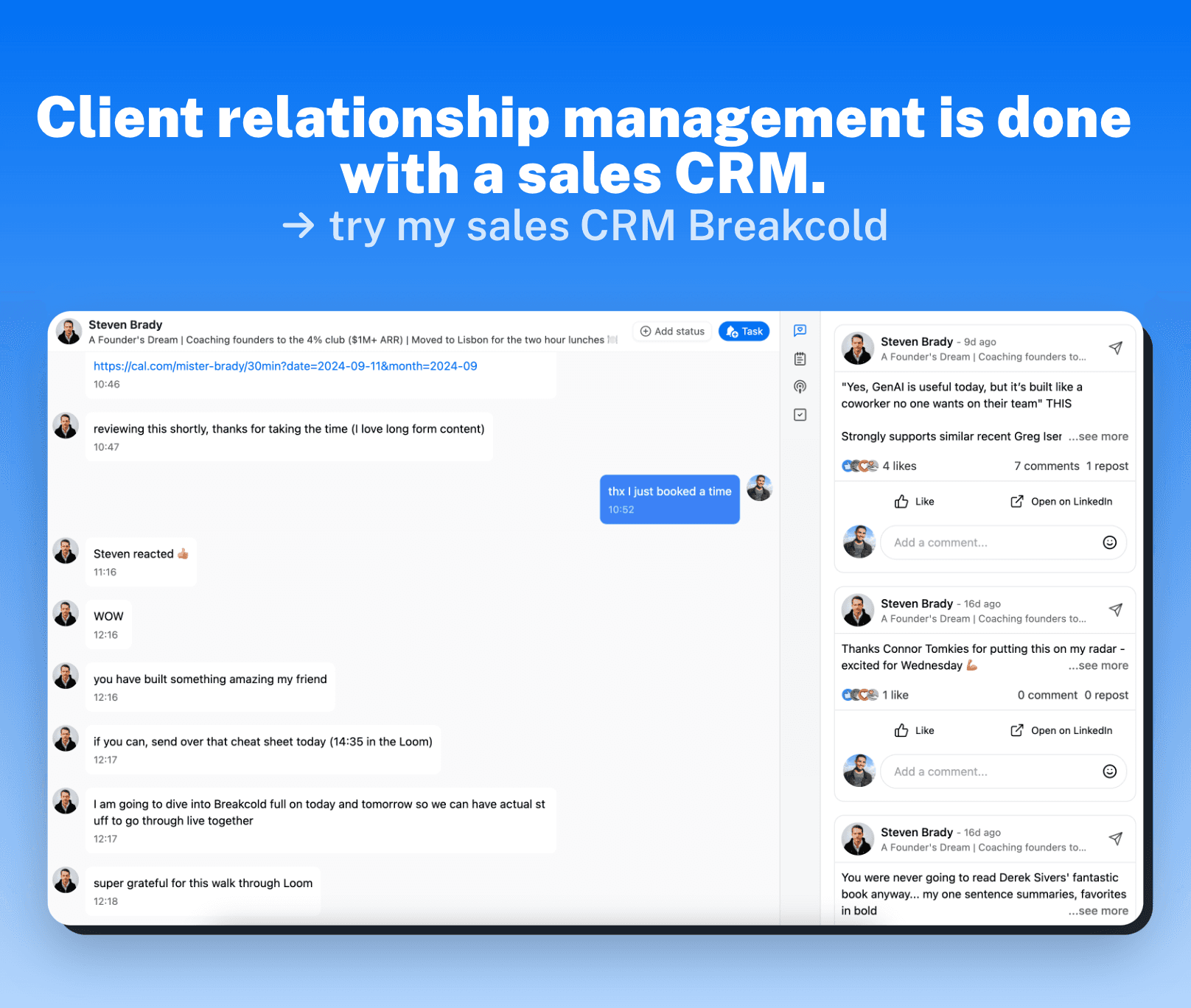
Client Acquisition vs. Client Relationship Management: What's the Difference?
In the world of business, two key terms that often come up are client acquisition and client relationship management. While both are essential for the success of a company, they serve different purposes and require different strategies. Understanding the difference between client acquisition and client relationship management is crucial for any business looking to thrive in today's competitive landscape
Defining Client Acquisition and Client Relationship Management
Client acquisition refers to the process of gaining new customers or clients for a business. It involves identifying potential leads, reaching out to them, and converting them into paying customers. This is typically the first step in building a customer base and growing a business.
When it comes to client acquisition, businesses employ various strategies to attract potential customers. One common approach is through marketing campaigns, where companies utilize different channels such as social media, search engine optimization, and email marketing to generate leads. These campaigns are designed to create awareness about the products or services offered and entice potential customers to engage with the business.

Additionally, businesses may also utilize networking events and conferences to connect with potential clients. These events provide opportunities for face-to-face interactions, allowing businesses to showcase their offerings and establish personal connections with potential customers. By attending industry-specific events, businesses can target their ideal audience and increase their chances of acquiring new clients.
Once potential leads have been identified, businesses need to effectively communicate with them to convert them into paying customers. This involves engaging in personalized conversations, understanding their pain points, and presenting tailored solutions. By demonstrating a deep understanding of the potential customer's needs and offering valuable solutions, businesses can increase their chances of successfully acquiring new clients.
On the other hand, client relationship management focuses on nurturing and maintaining relationships with existing clients or customers. It involves providing excellent customer service, addressing their needs and concerns, and building long-term partnerships. Client relationship management aims to retain customers and foster loyalty to ensure repeat business and positive referrals.

Effective client relationship management involves regular communication with clients to ensure their satisfaction. This can be done through various channels such as phone calls, emails, or even in-person meetings. By actively listening to their feedback and addressing any issues promptly, businesses can strengthen their relationship with clients and build trust.
Furthermore, businesses can also implement loyalty programs or incentives to reward their existing clients. These programs can include discounts, exclusive offers, or access to special events. By providing added value to their existing clients, businesses can encourage repeat business and increase customer loyalty.
Another crucial aspect of client relationship management is staying updated with industry trends and changes. By keeping abreast of the latest developments in their clients' industries, businesses can provide relevant insights and advice. This positions them as trusted advisors and strengthens the client-business relationship.

In conclusion, client acquisition and client relationship management are two essential components of business growth. While client acquisition focuses on gaining new customers, client relationship management ensures the retention and loyalty of existing clients. By implementing effective strategies in both areas, businesses can establish a strong customer base and foster long-term partnerships.
What's the Difference between Client Acquisition and Client Relationship Management?
While both client acquisition and client relationship management are vital for business growth, they differ in their objectives and strategies.
Client acquisition focuses on bringing in new customers. It requires a proactive approach to identify potential leads, reach out to them through various marketing channels, and convince them to choose your products or services. The goal is to generate leads and convert them into paying customers.
Client relationship management, on the other hand, is about nurturing and retaining existing customers. It requires a more personal and attentive approach to provide exceptional customer service, address concerns, and build trust. The goal is to create long-lasting relationships that result in repeat business and referrals.
When it comes to client acquisition, businesses employ various strategies to attract potential customers. These strategies may include running targeted advertising campaigns, attending industry events and conferences, and leveraging social media platforms to reach a wider audience. By actively seeking out new leads, businesses can expand their customer base and increase their market share.
Once a lead is generated, the next step is to engage with them and convert them into paying customers. This involves building a compelling value proposition, showcasing the benefits of your products or services, and addressing any concerns or objections they may have. Effective communication and persuasive sales techniques play a crucial role in convincing potential customers to choose your business over competitors.
Client acquisition is not a one-time event but an ongoing process. Businesses need to continuously adapt their strategies to changing market dynamics and consumer preferences. By staying updated with the latest industry trends and customer insights, businesses can refine their client acquisition strategies and stay ahead of the competition.
On the other hand, client relationship management focuses on nurturing and retaining existing customers. It involves building strong relationships with customers by providing exceptional customer service and personalized experiences. This includes promptly addressing customer inquiries and concerns, proactively seeking feedback, and going the extra mile to exceed customer expectations.
One of the key aspects of client relationship management is building trust. Trust is the foundation of any successful business relationship, and it is earned through consistent delivery of high-quality products or services, transparent communication, and reliable support. By prioritizing customer satisfaction and building trust, businesses can create loyal customers who are more likely to continue doing business with them and refer others to their products or services.
Client relationship management also involves leveraging technology and data to enhance customer experiences. Businesses can use customer relationship management (CRM) software to track customer interactions, preferences, and purchase history. This data can then be used to personalize marketing messages, offer targeted promotions, and provide tailored recommendations to individual customers.
Furthermore, client relationship management extends beyond the initial sale. It includes ongoing communication and engagement with customers to ensure their satisfaction and address any post-purchase concerns. By staying connected with customers and continuously providing value, businesses can foster long-term relationships that result in repeat business and customer loyalty.
In conclusion, while client acquisition and client relationship management are both important for business growth, they differ in their objectives and strategies. Client acquisition focuses on bringing in new customers, while client relationship management is about nurturing and retaining existing customers. By effectively implementing both strategies, businesses can maximize their growth potential and build a strong and loyal customer base.
Examples of the Difference between Client Acquisition and Client Relationship Management
Let's explore some examples to illustrate the difference between client acquisition and client relationship management in different business contexts.
2.1 - Example in a Startup Context
In a startup context, client acquisition might involve developing a targeted marketing campaign to attract new customers to try the company's innovative product. On the other hand, client relationship management would focus on providing ongoing support and personalized guidance to ensure a positive user experience and encourage customers to become brand advocates.
2.2 - Example in a Consulting Context
For a consulting firm, client acquisition might involve networking, attending industry events, and offering free consultations to attract new clients. Once a project is secured, client relationship management becomes crucial in delivering exceptional service, maintaining open communication, and exceeding client expectations to foster long-term partnerships.
2.3 - Example in a Digital Marketing Agency Context
In a digital marketing agency context, client acquisition efforts could include running targeted ads, optimizing website content for search engines, and offering free audits to attract new clients. Client relationship management would involve regular reporting, transparent communication, and providing insights and recommendations to continuously add value to the client's marketing efforts.
2.4 - Example with Analogies
Using analogies can further illustrate the difference between client acquisition and client relationship management. Think of client acquisition as fishing – you cast your line, attract new fish, and reel them in. Once you have caught the fish, client relationship management becomes essential to keep the fish happy and satisfied in your tank.
Similarly, client acquisition is like filling a bucket with water – you need to find water sources and pour them into the bucket. Once the bucket is full, client relationship management ensures the water stays clean, fresh, and doesn't leak out.
In summary, client acquisition is about gaining new customers, while client relationship management is about fostering loyalty and retaining existing ones. Both are vital for business success, and a balanced approach that combines effective client acquisition strategies with excellent client relationship management is key to sustainable growth.


















































































































































